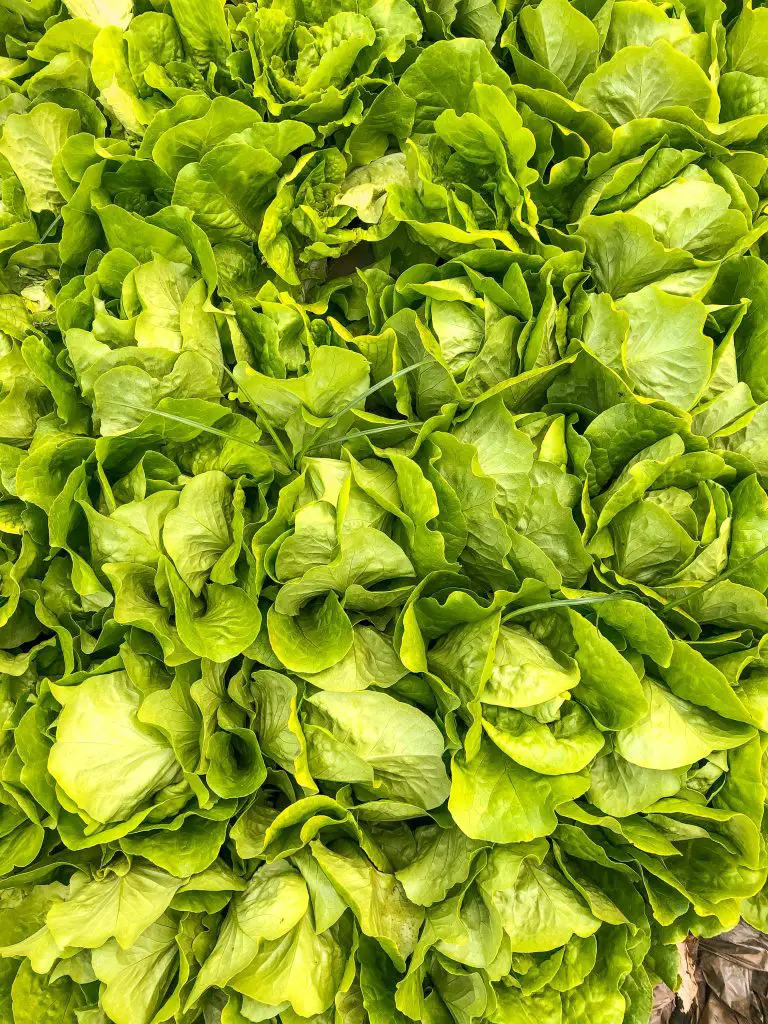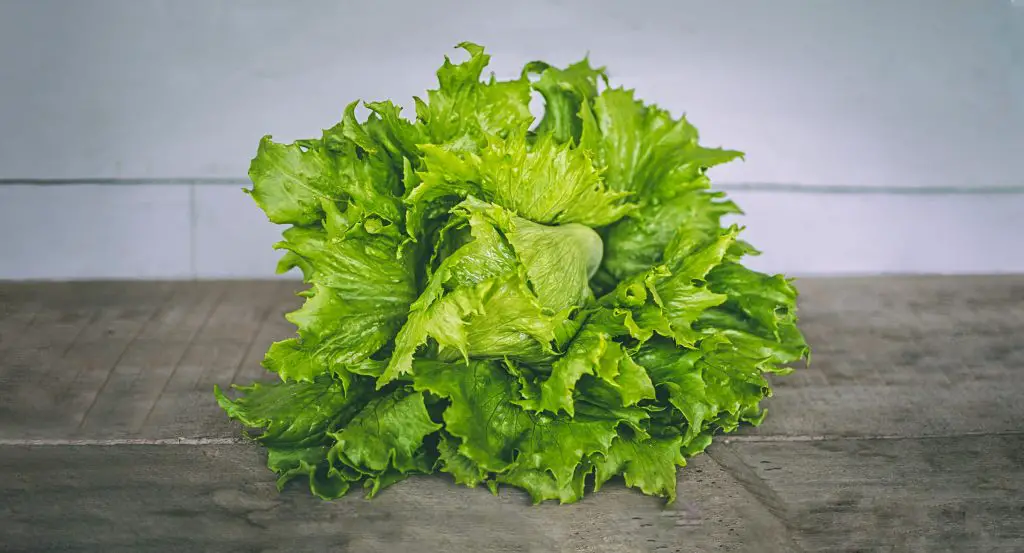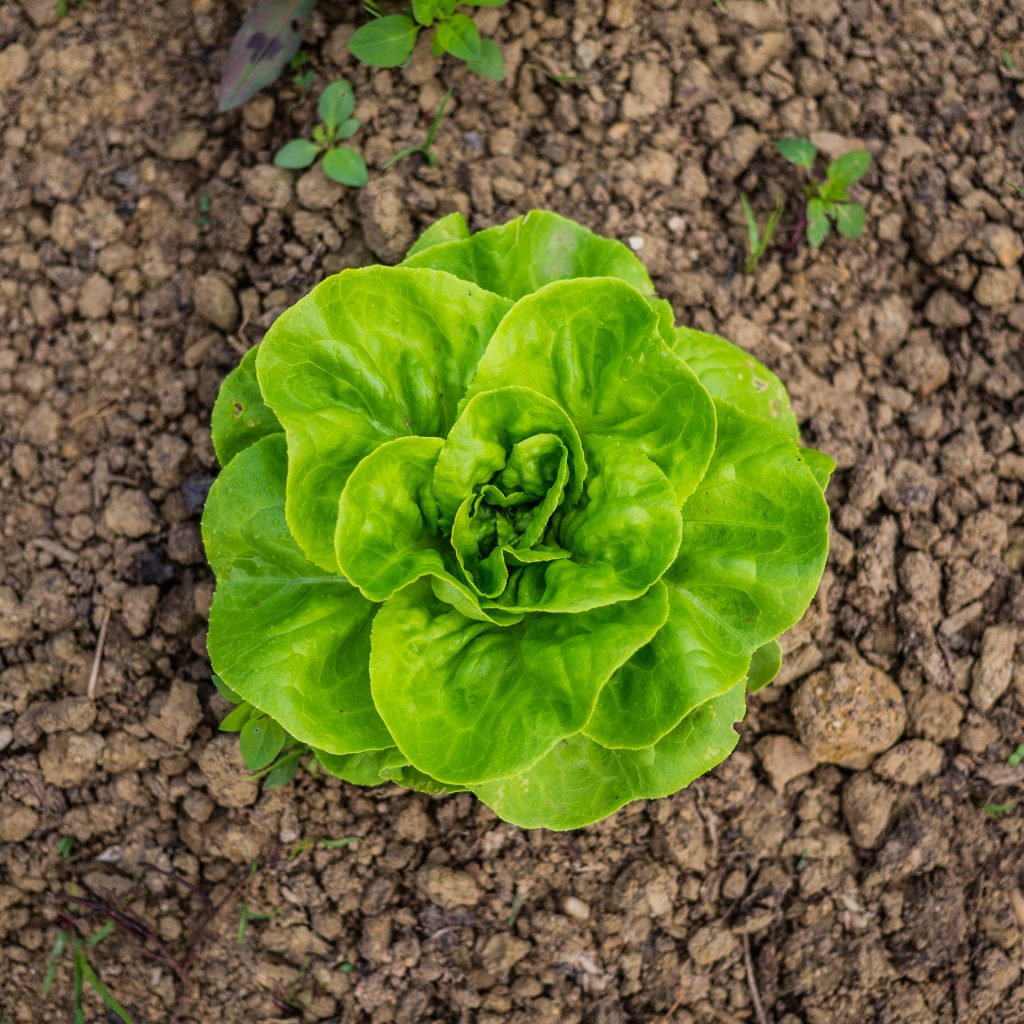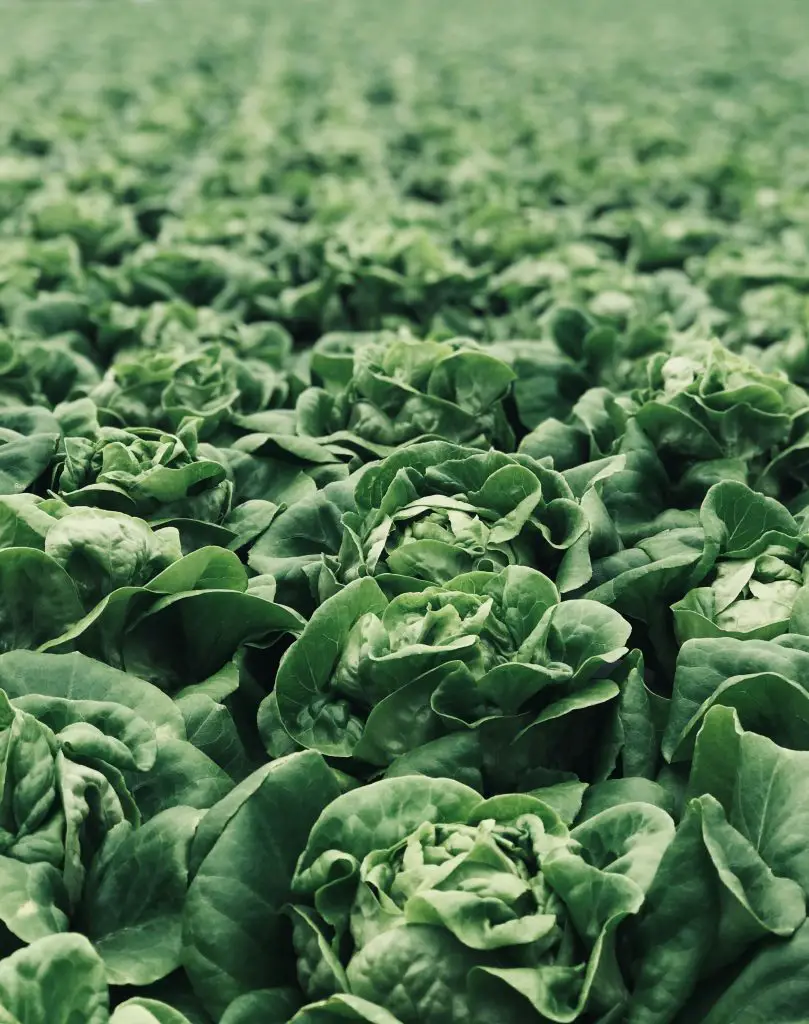Does Lettuce Grow Underground? Lettuce is an extremely widely eaten vegetable that is used in a range of different cuisines to create things such as salads and is also as a condiment in things like sandwiches. So if you are unfamiliar with how to grow the plant one of the most common questions asked is how does lettuce grow? Does it grow below ground or above ground?
Lettuce plants do not grow below ground they grow on the surface of the soil and most plants are typically between 4 and 6 inches wide and tall depending upon the specific variety that you are growing. There are a wide range of varieties that are grown commercially that a lot of people divide into loose-leaf varieties and those varieties that produce a head such as Iceberg or Romaine lettuce.
The varieties that produce a head are most commonly used commercially because they require less labour to harvest. The growers will allow the plants’ head to develop before chopping the entire plant down to ground level. However, for the vast majority of home gardeners which want a little bit of lettuce regularly producing head varieties is not ideal because you get a single harvest from a plant and that’s pretty much it.

The advantage of loose-leaf varieties is that the gardener can come and visit the plant multiple times to collect a small number of leaves to produce the salad that they require on a given day as the root system and the plant remains intact.
However, it is important to note that the bags of loose lettuce leaves sold in a local grocery store usually do not consist solely of lettuce varieties but are often a combination of other things such as beetroot leaves and spinach.
Can I Grow Lettuce At Home?
Lettuce is extremely easy to grow at home and is well worth the effort if you have a little patch of free space in your garden or even on a balcony. All you really need to do is to go down to the local garden centre and purchase a pack of seeds to get you started. However, to create that lovely mixture of leaves it is recommended that you purchase a mixed blend of lettuce seeds as this will give you a variety of different leaf types to be able to put into your salad.
Alternatively, try visiting seeds now which are a company that specialises in supplying a range of vegetable seeds. To check out their site click on the link below.
How To Grow Lettuce Seeds
To start lettuce seeds off the easiest way is to put them into a flat seed tray. The first step is to fill up the seed tray with a good quality seed raising mix. While you can use soil from the garden it’s generally not recommended because it usually contains weed seeds which can compete with your crops.
Before planting the seeds into the tray it is a good idea to water the tray first. The reason for this is that the seeds can often be moved around on the surface of the soil if the water is too heavy. Pre-watering it avoids any chance of this happening.
To plant the seeds sprinkle them across the surface of the seed tray in row. There is no need to bury the seeds as they need light to germinate. The main thing that you need to do is just ensure that the seeds have good time contact with the soil as this will ensure that they become moist and begin the germination process.
Typically lettuces will take approximately 7 to 14 days to start to germinate and they will also need to spend approximately 4 to 6 weeks in the seed tray before they are large enough to plant out into the garden. During the period that they spend in the seed tray, it is important to ensure that the soil remains moist.

If you are someone that has a busy life and struggles to water the plants every day one of the easiest ways to reduce I need to water the plants is to place the seed tray into another container that can hold water.
Fill the secondary tray up with water so that it covers the bottom centimetre of the seed tray. This will ensure that the plants have access to moisture when they need it and you’re just need to check that the water in the bottom the tray is still there every couple of days.
Planting Lettuce Seedlings Into The Garden
Once the seedlings have reached a sufficiently large size which is when they are typically 1 to 2 inches tall they can be planted out into the garden. When planting them out in the garden it is important to select a location that has moist rich and free-draining soil to ensure that the plants have all the nutrients that they require.
In terms of sunlight, lettuce seeds can be successfully grown in shade or full sun because the plant does not need to flower to produce a crop. However, the ideal location to put lettuce seedlings in will depend greatly upon the weather conditions in your region at the time. If you are planting at the time of the year when it is relatively hot it is generally a good idea to put the seedlings into shaded locations.
The reason for this is that lettuce plants have a tendency to bolt relatively quickly if they become stressed which can occur in high temperatures or when there is a lack of water. If the plant bolts by producing a flower stalk the lettuce will become bitter very quickly. To maximize the life of the plant in these conditions it is best to plant in the shade.

However, if you are planting in the cooler parts of the year the seedlings could be planted in direct sun or partial shade depending on what space you have available in your garden.
Once you have put the seedlings into the garden the other important thing to do is the mulch around the plants to ensure that the soil retains moisture. The ideal material to use for this sort of thing is a straw of some kind. The layer of mulch should ideally the 2 to 4 inches thick to ensure that light does not reach the surface of the soil.
The other important thing to do when putting in any type of leafy green is to provide it with some protection against slugs and snails which will attack the plants. The best way to protect the plants is to sprinkle snail bait around the plants which will deter the snails from attacking them.
Harvesting Lettuce Leaves
Once the plants have been transplanted into your garden it will typically take between 4 and 6 weeks for the plants to become established and get large enough for you to take a harvest from them.
When harvesting the plants it is best to pick the outer leaves which are the oldest leaves on the plant. To do this remove them by hand rather than using scissors as you will damage all the leaves on the plant by taking this approach. If you leave the small leaves in the centre of the plant and only take the outer ones the plant will recover more quickly allowing you to take additional harvest within a week or so.

However, it is important to taste the lettuce leaves as you’re picking them as they can become better even before they bolt which means they will start to not taste very good.
To ensure that you have a continuous supply of lettuce leaves it is a good idea to continually plant seeds a new batch of seeds each time the previous batch is being transplanted into the garden. This will ensure that you have 2 to 3 batches of lettuce in your garden at any one time which can be harvested from.
I hope you found this article useful and you have great success with your lettuce leaves. If you have any additional questions or comments please leave them in the section below.
Relevant Articles
Will Deer Eat Lettuce? And How To Stop Them
Is Radicchio A Lettuce Or Cabbage?
Can You Harvest Romaine Lettuce More Than Once?
How Many Times Can You Harvest Lettuce? (It’s More Than You Think)

